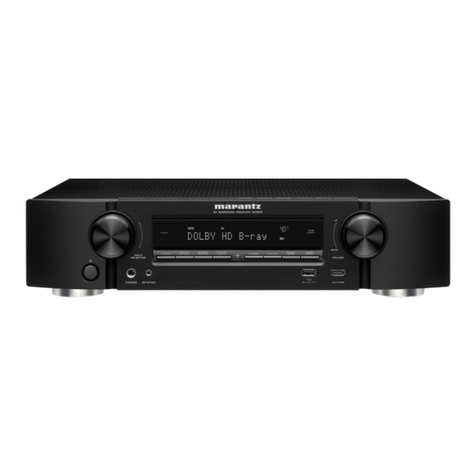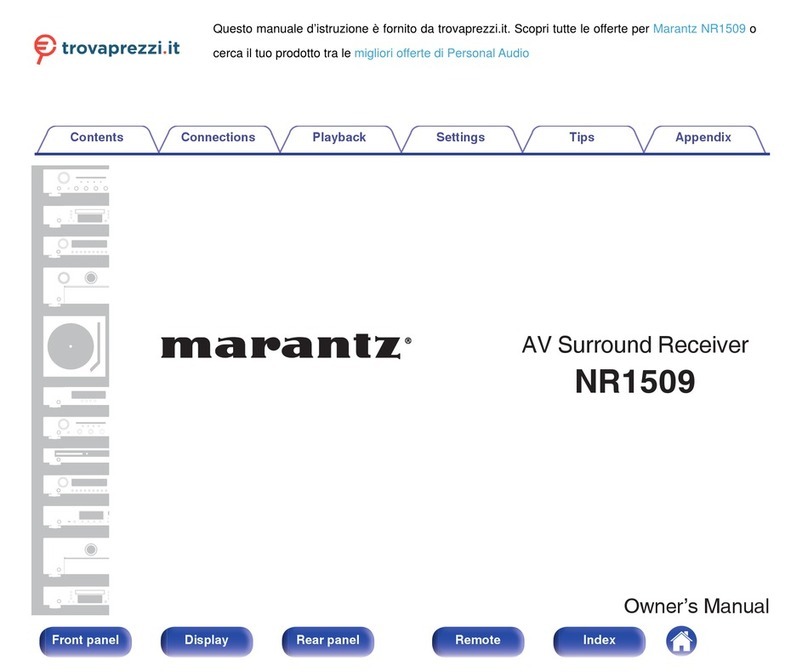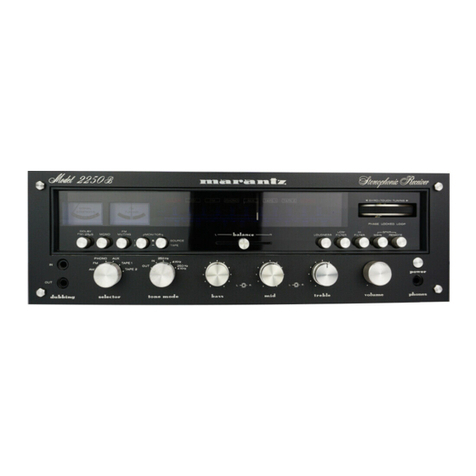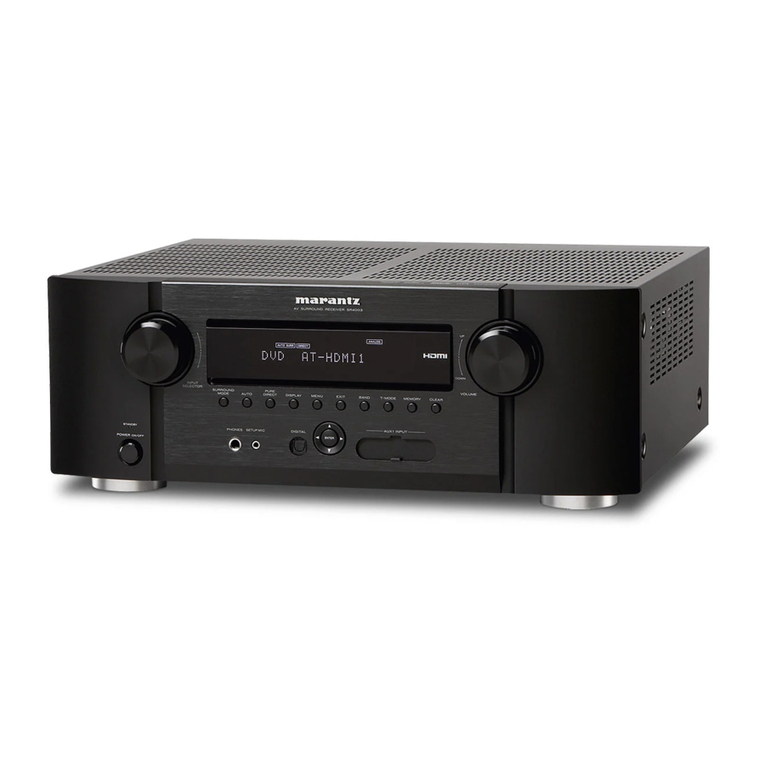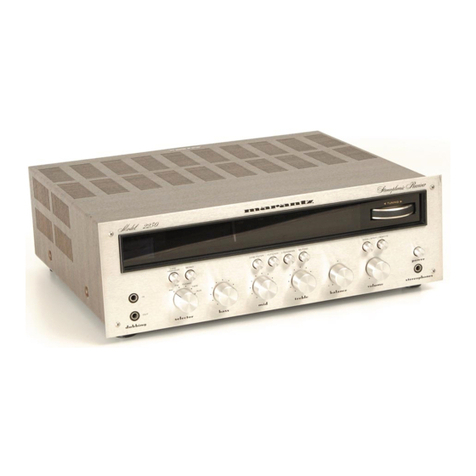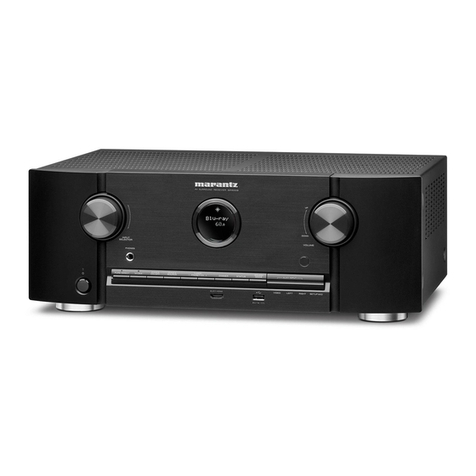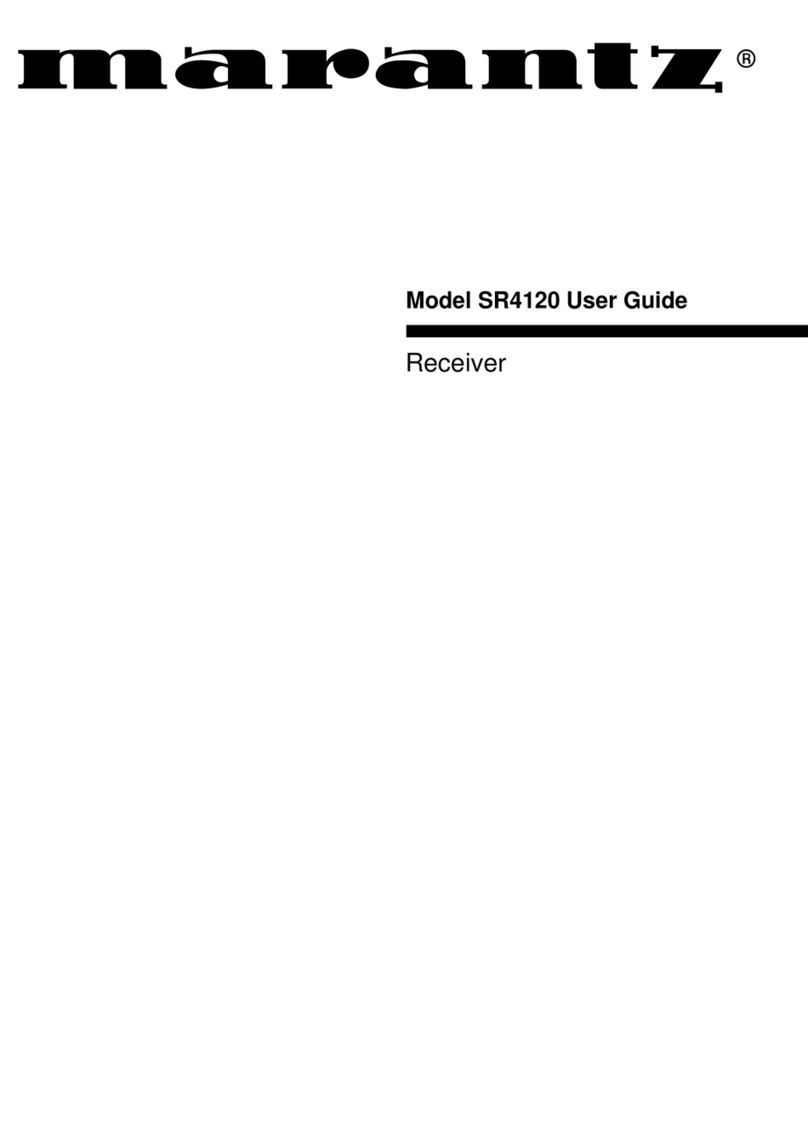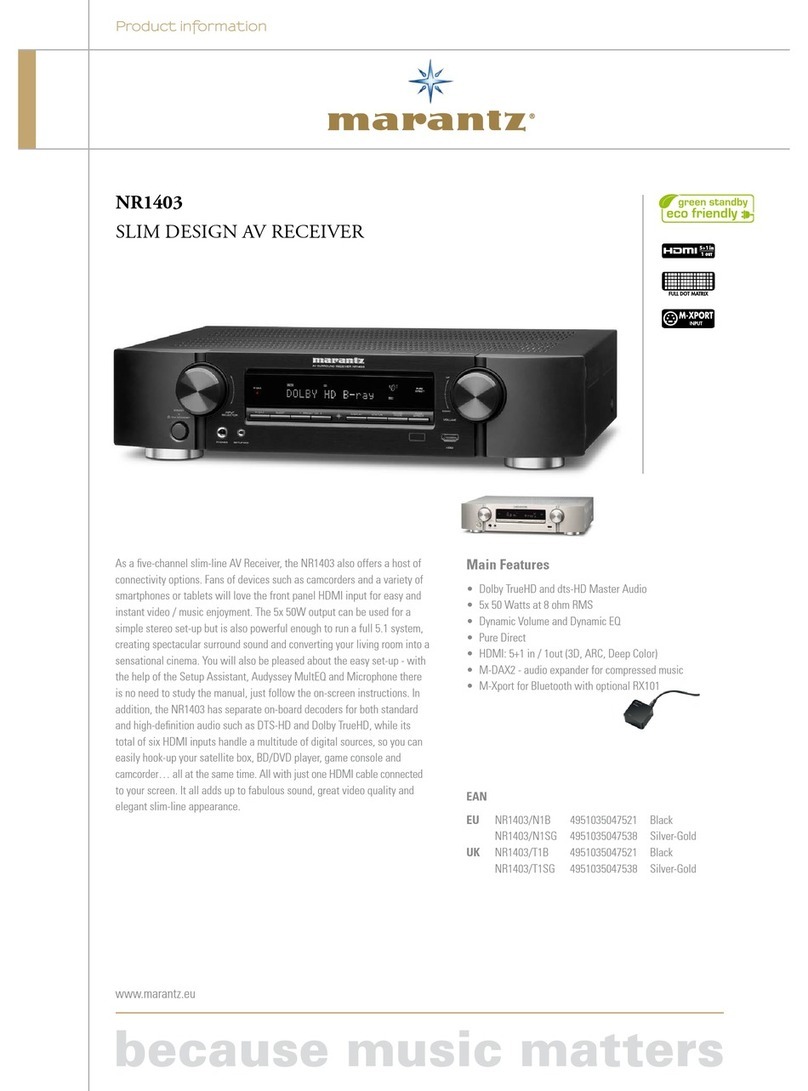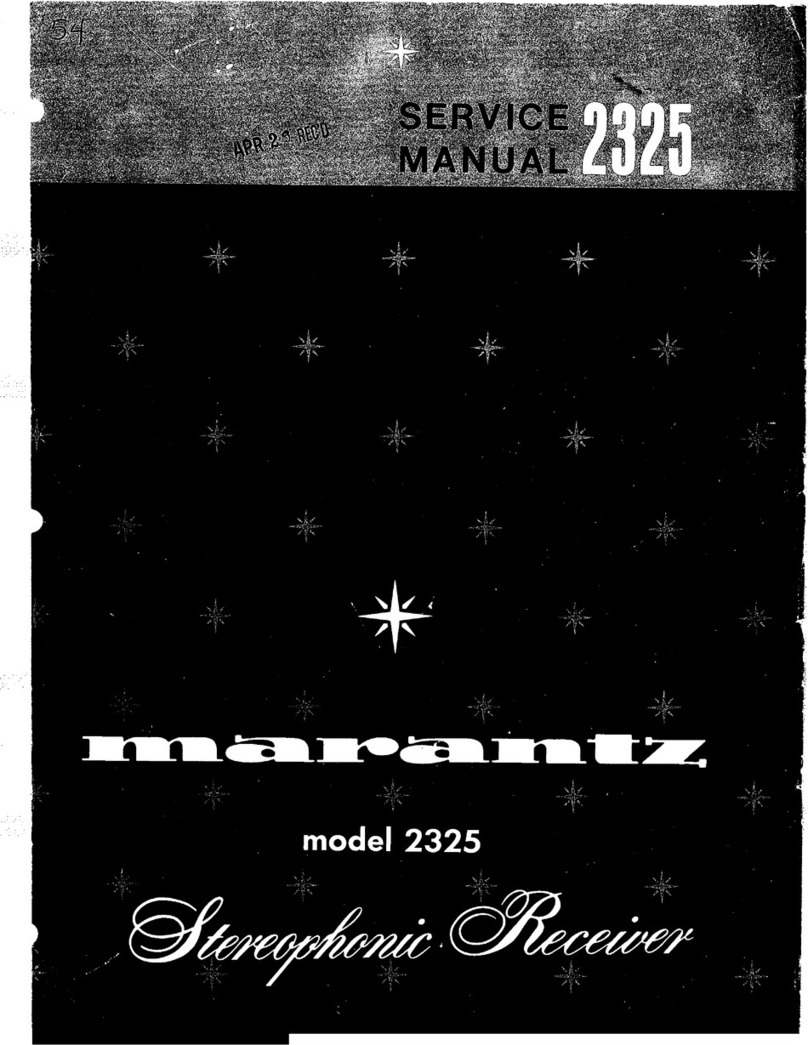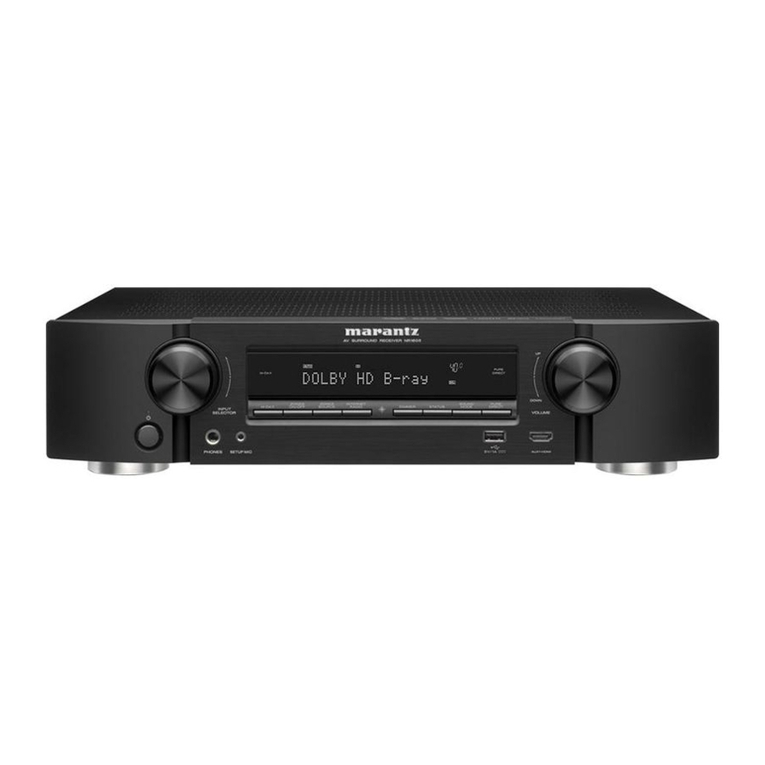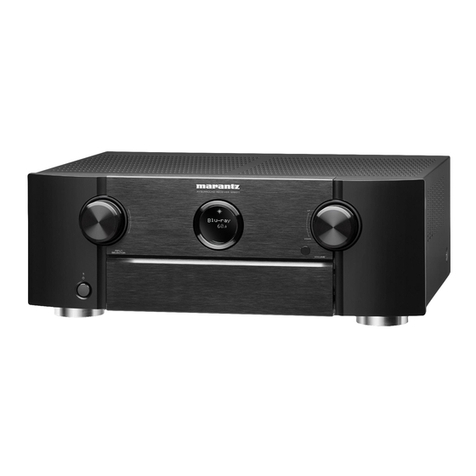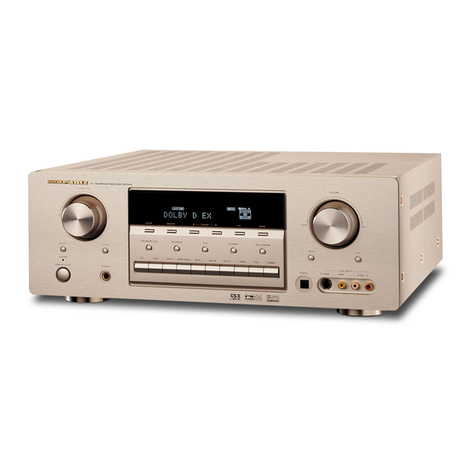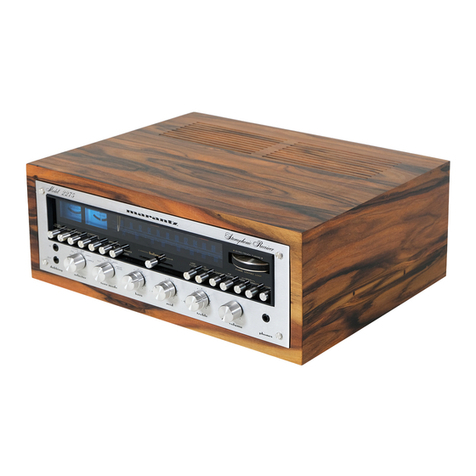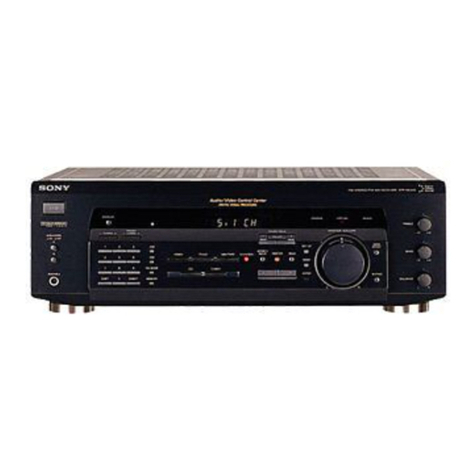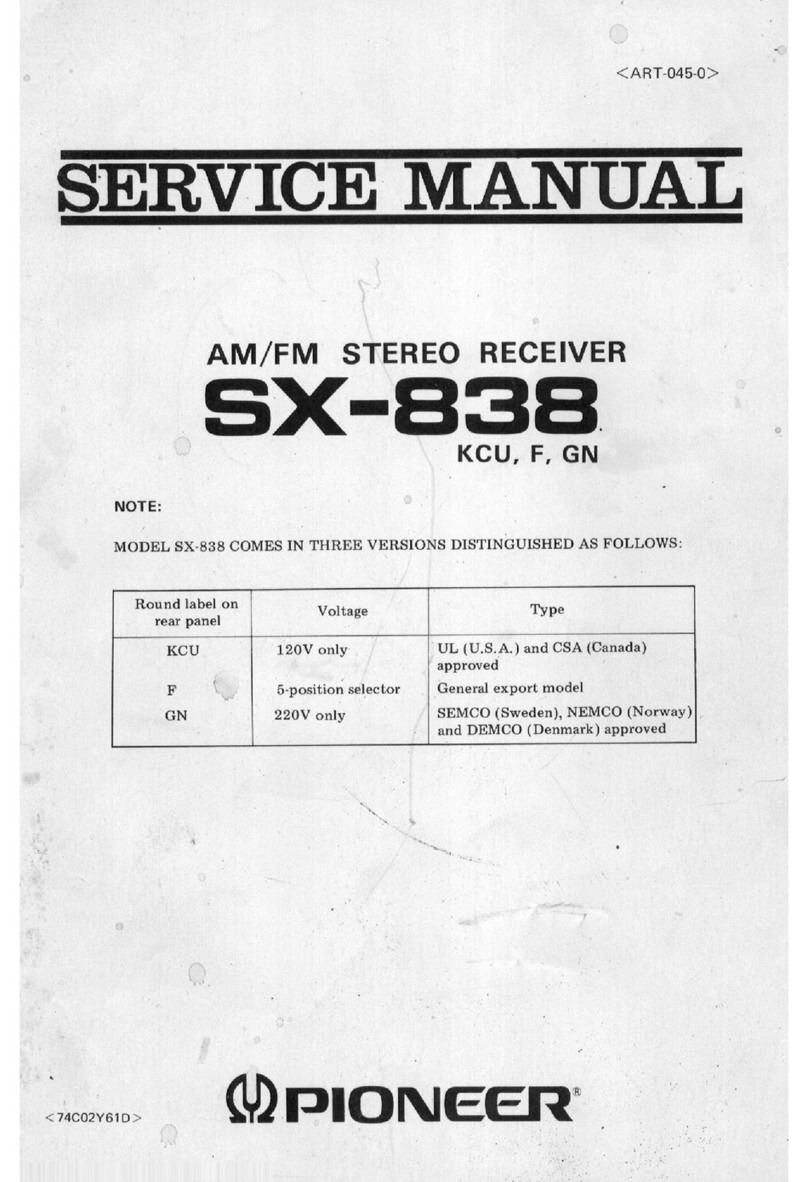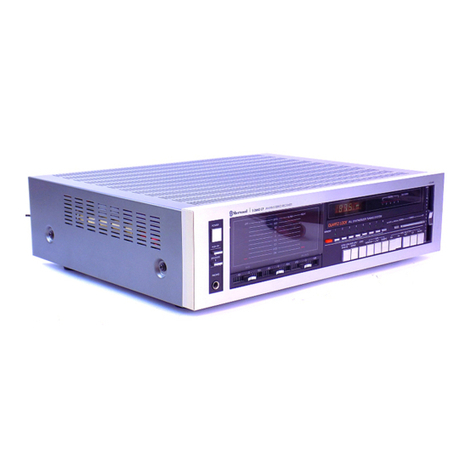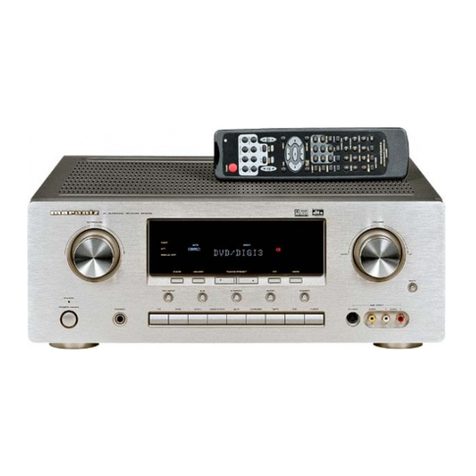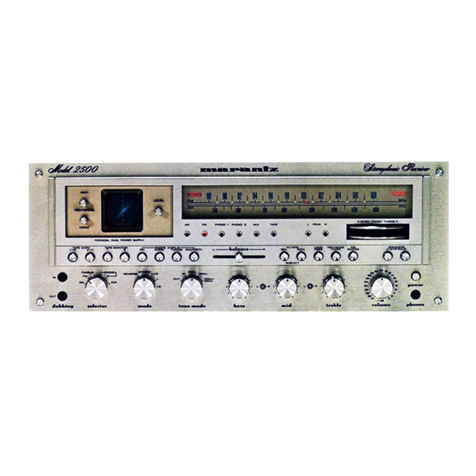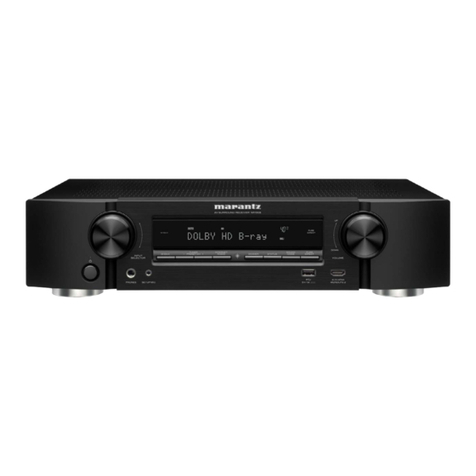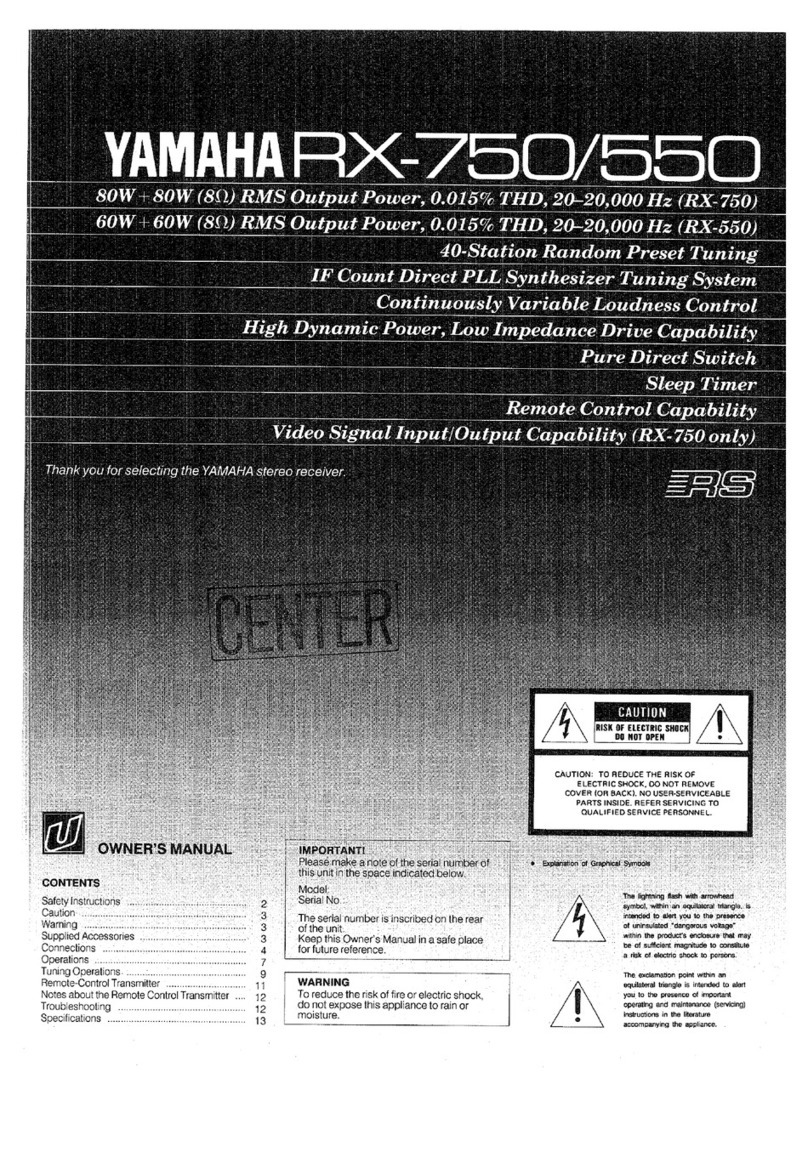WA
R A
All parts of MARAN TZ
produ
cts are fully
guaranteed for a period
of
THREE
YEARS
from
date
of purchase, exce
pt
for
tubes
which are
guaranteed for NINETY DAYS from
date
of
purchase,
and
except
for
spe
aker
pr
oducts.
Speaker
produ
cts are guaranteed.as f
ollow
s: all speaker and
electron
ic
compo
nents are fully
guaranteed
for a
period of
THRE
E YEARS from
date
of purchase;
the cabinetry Is guara
ntee
d against
manufacturing
defects on ly, for a period of TWO
YEARS
from
dat
e of purchase.
In
the
event
that
service is requ ired, all
necessary
par
ts and labo r will be furnished free of
charge during the above stated periods. The
conditions of th is Warranty, and t he
exte
nt
of the
responsibilitY
of
MARA NTZ COMPANY, INC.
under this War;anty,
are
as follows:
1,
The
purchase must have
been
made
from
an
authorized
MARANTZ dealer.
2,
The
Warranty
extends
only
in favor of
the original, registered
owner
of the prod uct.
3.
The
Warranty Registration Card must be
transmitted
to
MARAN
IZ
COMPANY, INC., P. O.
Box 99, Sun Valley, California 91 352, no t later
than
TEN DAYS
from
date
of purchase..
4.
The
Warranty will
become
void if repairs
are
effected
by
anyone
other
than
an
authorized
MARANTZ Service
Station.
5. If it becomes necessary to
send
this
product
or
any
defective part to MARANTZ
COMPANY, INC., or
to
an
aut
horized MARANTZ
Serv
iceStet
ion, all shipping charges must be fullv
prepaid.
If
the
ent
ire inst
rume
nt is
sent,
it
must
be
shipped in its original package. No accessories
should be shipped
with
the
product. If
any
accessories are s
hipp
ed with the
product.
MARANTZ COMPANY, INC. shall have no
liability whatsoever for loss of
or
damage to any
such accessories,
nor
for
the
safe-return thereof.
6. This Warranty shall be valid only if
the
purchase was made within the United States of
America.
The
Warr
anty
shall not apply unless
shipment is made by
the
pur
chaser to the
MARANTZ Service
Station
from
a point within
the
United
Stat
es.
If
the
requested
repairs an
d/
or
parts exchange are
within
the t
erm
s of this
Warranty , MARAN TZ COMPANY. INC. will
prepay return shi pping charges, provided that such
return
shipment is to be made
to
an address
located
wit
hin the
United
States.
7. This
Warranty
is void if
the
Serial
Nunt>er has been
altered
or removed. This
W
arranty
shall
not
apply
if
the
product
has
not
been
co
nnec ted or operated in
accordance
with th e
instru
ctions
furn ished by MARANTZ COMPANY,
INC. This Warranty shall also be void if the
prod
uct
has been
altered
or repaired in any way
which MARANTZ COMPANY, INC. believes has
affected
the
stability
or
reliability of
the
product.
8. MARANTZ COMPANY, INC. shall have
no liability whatsoever for consequential da mages.
The sole responsibility of MARANTZ COMPANY,
INC.
under
this Warranty sha ll
be
limited to
the
repair of the prod
uct,
or rep lacement thereo f, in
the sole discretion of MARANTZ COMPANY,
INC.
9. This Wa
rranty
does
not include the
furnishings of labor or par ts for user mainte nance,
as the same is described in the instructi on
manu
al
or
handbook
furnished with this pro
duct,
10. This Warranty is valid only
with
respect
to
repairs effected by an author ized MARANTZ
Service
Station
.
11.
EXCEPT TO THE
EXTENT
THAT
APPLICABLE
LAW
PRECLUDES
A
DISCLAIMER OF WARRANTY,
THERE
IS NO
IMPLI
ED
WARRANTY
O F
MERCHANTABILITY OR FITNESS WITH
RESPECT TO THIS PRODUCT, NOR ARE
THERE
ANY O
THER
WARRANTIES WHICH
EXTEND BEYOND THE PROVISIONS OF
THIS
WARRANTY.
ORDINAR
Y PERIODIC
CHECK·UPS ARE
NOT
INCLUDED IN
THIS
WARRANTY.
12
. MARANTZ COMPANY, INC. reserves
the right to
make
chariges .ln design
and/or
i
mprovements
upon its
prod
uct
s
without
any
obligation to include these changes in any
products
theretofore
manufac
tured.
TO
PROTECT
YOUR RIGHTS
UNDER
THIS WARRANTY.
FILL
OUT AND MAIL
THE
WARRANTY
REGISTRATION
CARD
TO
MARANTZ COMPANY, INC., P.O. BOX 99,
SUN VALLEY,
CALIFORNIA
91352
, NOT
LATER THAN TEN DAYS FOLLOWING THE
DATE OF PURCHASE.
Should there be any questions, please
contact
the
Marantz National Service Manager, Marantz Company, Inc.
P.O. Box 99, Sun Valley, California
91352
~
PURCHASE
'S
RECD
0
REGISTRATION FOR
MARANTZ
3-YEAR
GOLDEN
WARRANTY
Model: Marantz Model
4270
Serial No. _
Purchaser's Name _
Purchased From (Name) _
Address _
Price Paid $
------
Date Purchased - _
Date Warranty Reply Card Mailed _
The above information becomes
your
permanent record of
a valuable purchase. It should be promptly filled in at the
same
time
that
you fill in and mail
the
warranty registration
reply card to Marantz. This information provides a valuable
insurance record and must also be referred to should you
have any correspondence with Marantz.
